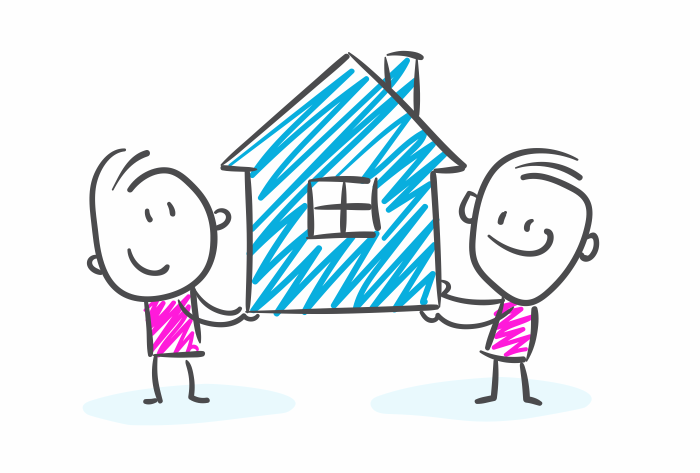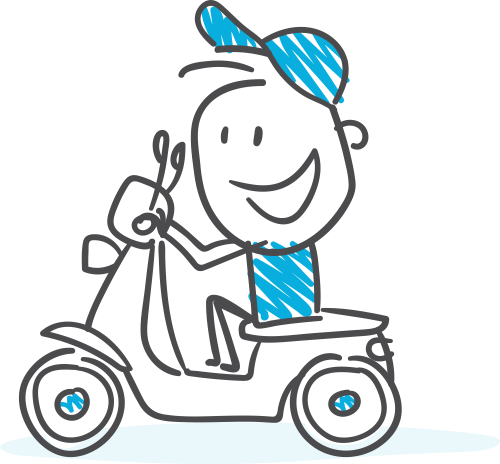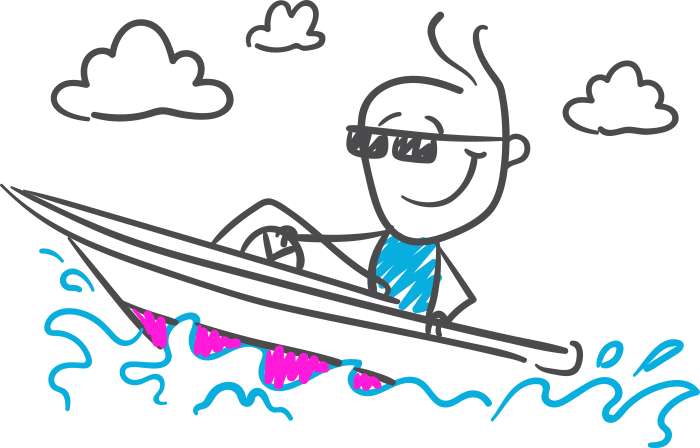Auto Insurance Coverage
Get familiar with the different types of auto insurance coverage before you quote or buy auto insurance.
- Vehicle Insurance
- Auto
- Motorcycle
- Classic Car
- Boat/Yacht
- Quote & Buy Online
- Mexico Tourist Auto
- Mexico Motorcycle
What does auto insurance cover?
Your auto insurance coverage is for property damage or injuries you cause to other people when you are at fault when you hit them. It can also provide coverage for damage to your car as well. The amount of coverage you get will depend on how much limit you purchase or which coverages you add to your policy. Check out the different types of coverage offered by our insurance carrier partners, and get a custom car insurance quote.
Auto insurance coverages for other people’s injuries or property
Liability Insurance
The foundation of your auto insurance policy is liability protection. Liability insurance is an important coverage and is typically mandatory coverage by state law or regulation. It’s designed to protect you, your family, or those you list as insured on your policy from financial distress when you’re liable for the result of a car accident:
Bodily injury liability: This coverage is for medical bills, lost wages, and other expenses caused if you hit someone and they’re injured. This coverage will provide protection for all people you harm in an accident, as well as legal fees if you have to go to court as a result of the incident.
Property damage liability: This coverage is to pay for damages to another person’s vehicle or other property.
Example*: You run a stop sign and hit a vehicle in the intersection, along with damage to the other person’s car you injure the driver. Liability will cover the driver’s injuries and the cost to repair or replace the other party’s car.
Coverages for your car and you or your household members
Comprehensive
Comprehensive coverage provides protection for your car if there is a fire, theft, vandalism, animal strike, broken glass, or weather. This coverage normally has a deductible. Your deductible is selected by you when you buy your policy and usually applies before or simultaneously to claims payments made by the insurance carrier.
Example: Your car is outside during a hail storm and there is some minor dimple damage to the roof, hood, and trunk lid. The damage amounts to $3,000. Your deductible is $500. You would pay $500 and your insurance company will pay $2,500.
Collision
If your car is damaged during an accident with another vehicle or object, Collision coverage pays to repair or replace your vehicle. Collision covers you regardless of fault. Like comprehensive coverage, this coverage also includes a deductible that you select and is applied toward the cost of repairs.
Example: You underestimate a turn and you veer off the road into a tree. The incident causes $5,000 in damage to your vehicle. Your deductible is $500, so you would pay the first $500 and your insurance company would pay $4,500.
Personal property and pets: Collision coverage isn’t for any personal items in the car. However, Progressive offers FREE pet coverage if you purchase collision and your pet is hurt in a covered loss. For other insurance carriers, like Nationwide, you can purchase separate pet insurance.
Uninsured/Underinsured Motorist Bodily Injury
If you are in an accident and the other party is at-fault, but has no insurance or doesn’t have enough coverage, then Uninsured/underinsured bodily injury provides coverage to you and your passengers. Learn more about uninsured motorist coverage.
Example*: While stopped at a red light you are suddenly rear-ended. The other driver doesn’t have car insurance. Uninsured motorist bodily injury coverage will pay for the medical bills, lost income, and other injury-related expenses resulting from the accident.
Uninsured/Underinsured Motorist Property Damage
Uninsured/underinsured property damage is coverage that pays to repair or replace your vehicle if the at-fault party who hits your car doesn’t have insurance, or hasn’t purchased enough coverage. This coverage may have limits, so you should consult an insurance agent before you buy. For instance, in California, the coverage only provides $3,500 but has an alternative called Collision Damage Waiver that works in conjunction with your collision coverage.
Example*: Your car is damaged after an uninsured driver crashes into it while parked. Your policy’s uninsured property damage will cover the cost to replace your vehicle up to a specified limit. In some states, a deductible may apply.
Medical Payments
If you’re in an accident and you or one of your passengers are injured, medical payments will pay for related medical expenses. Medical payments coverage doesn’t require fault. If an accident resulted in a fatality, medical expenses can also be used to cover funeral expenses. This coverage may also apply if you or your family members are passengers in other vehicles, hit by a car while riding bikes, or while walking.
Medical payments are not offered in all states. When medical payments are not available, then personal injury protection (PIP) is offered. This coverage also provides coverage for medical payments and protects you in a similar way.
Example*: While driving to the store with a friend in your passenger seat, you are hit by another driver. Both of you suffer minor injuries. Medical payments will cover both of your medical expenses. A deductible may apply for personal injury protection.
Additional optional coverages
Roadside Assistance
If your car breaks down or needs assistance during an accident, Roadside Assistance pays for a towing service and may provide other ancillary benefits. Each insurance company sets its rules, the miles you can be towed, and when this coverage applies. Not all roadside assistance packages are the same. Better programs will also provide lock-out service, flat-tire changes, fuel/fluid delivery if you run out of gas, and more. You should consult your insurance agent or company prior to buying to understand the limits of this protection.
Example*: During a road trip with the family, you experience a blowout and your tire goes flat. Roadside assistance can tow your vehicle to the nearest repair shop.
Loan/Lease Payoff or Gap Insurance
If you have a loan or lease on your car, this may be good coverage to buy. This coverage is sometimes called gap insurance, and it provides coverage for your loan or lease payoff balance if it exceeds the car’s actual worth if totaled in an accident. Frequently, this coverage will setup thresholds relative to the vehicle’s actual cash value before triggered. Consult your insurance agent or company to better understand the limits.
Example*: Your car is totaled in a covered accident, and your collision coverage pays you what your vehicle is worth—$30,000. But you owe $35,000 on your car loan. Loan/lease payoff covers a $5,000 gap between what collision pays and your outstanding loan balance.
Rental car reimbursement
If your vehicle is involved in a “covered accident,” this coverage can pay for you to have a rental car while your vehicle is being repaired. This coverage is not meant for rentals during routine maintenance. This coverage is also not for any other short-term rental car or temporary replacement. That form of coverage is defined in your policy and is different from company to company.
Example*: Your insured car is involved in a covered accident and the adjuster estimates it will take two weeks to repair your car. Rental car coverage will pay for a replacement vehicle during that two-week period. If it takes more time than estimated, you can get additional days as long as it’s still related to the repairs for the covered accident.
Custom parts and equipment value
If you have added non-factory parts or equipment to your car, then Custom parts and equipment (CPE) coverage will repair or replace these items. Items commonly added aftermarket are things like a stereo, navigation system, custom wheels, or possibly custom paint. If it wasn’t installed by the original manufacturer, then it’s considered an after-market accessory that you’ll want to consider covering under CPE. Some companies may have limits on the amount of CPE coverage you can purchase.
Example: You put custom tires and rims on your car. CPE coverage will typically insure them up to the purchased CPE limit.
* Liability coverages as are some other auto insurance coverage available on your car insurance policy are subject to a limit of liability. The limit of liability is the amount of coverage you purchased and shown on your policy declarations. This is the maximum amount of coverage your insurance company will pay per the policy. For more information, consult an insurance agent or your insurance company.
Get an Auto Insurance
Quote Online
It’s Fast, Free, and Secure.
- Vehicle Insurance
- Auto
- Motorcycle
- Classic Car
- Boat/Yacht
- Quote & Buy Online
- Mexico Tourist Auto
- Mexico Motorcycle


